Sacramento had a thriving Chinatown at the center of the city. What happened to it?
Behind the shadow of Sacramento’s downtown is a quiet and mostly vacant square — one that holds a remnant of a once-lively community and hope for renewal.
Bee Curious, a community-driven series, answers a question from Ken Ball, a Lincoln resident who moved to the Sacramento area from Oakland five years ago:
Does Sacramento have a Chinatown like San Francisco or Oakland?
Well, it did.
Here’s what happened to it, where it is now and what community leaders hope for its future:
A step back in time
If you took a stroll in downtown Sacramento in the 1940s or 1950s, you would have entered the city’s sprawling Chinatown.
Turning onto Fourth Street, near I and J streets, and venturing onto I Street, you would likely find a Chinese herb shop owned by Yick Sil Hong or a small Chinese-owned grocery store.
You would have had your choice of Chinese restaurants — Hong King Lum on I Street, China Star on Broadway or Frank Fat’s on L Street. On J Street, you might have stopped by the Sun Sun Cafe, owned by executive chef Louie Wing, who was known for his fried whole chicken stuffed with sweet rice. Maybe you would have ordered a pork chow mein for 40 cents.
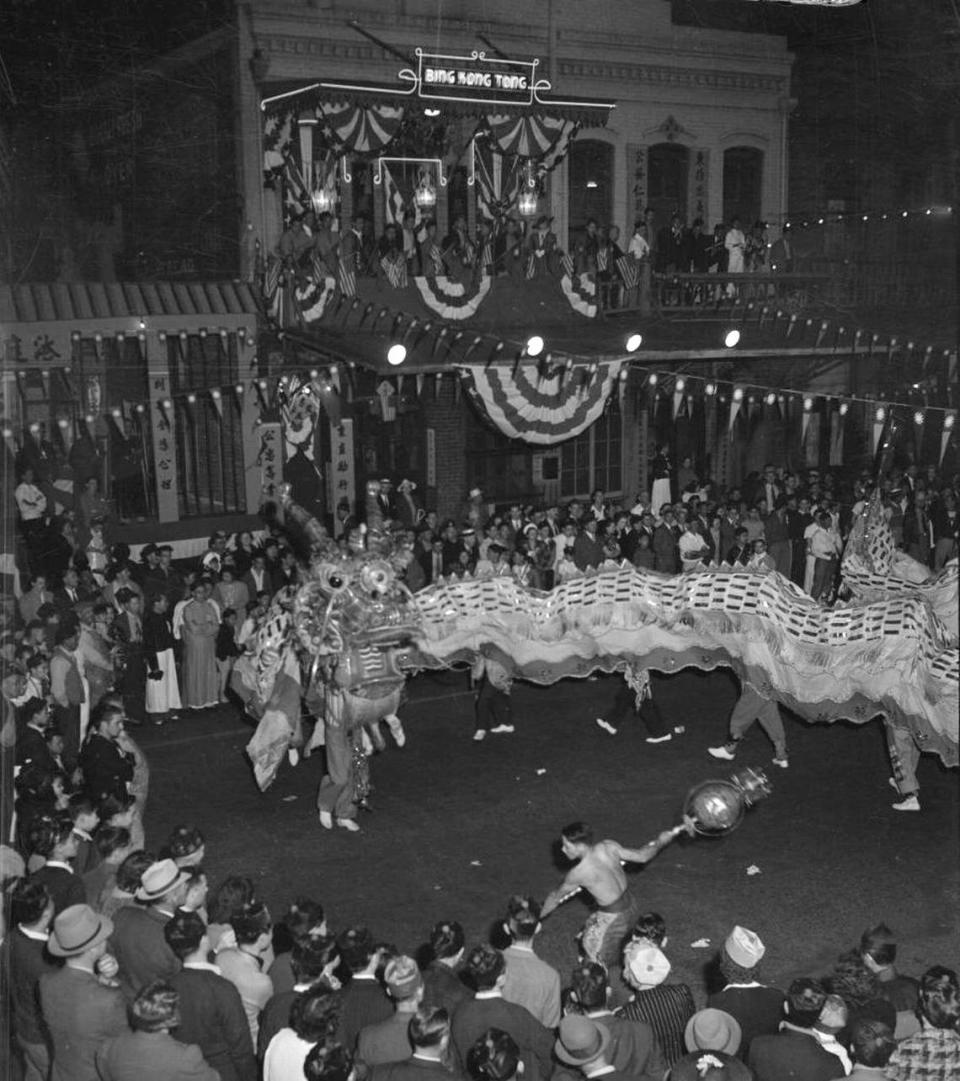
And once a month on Fridays, you might have gone to the YWCA at 17th and K streets, where you could have caught a glimpse of young Chinese students in button-ups and long dresses dancing underneath streamers, as a part of the Wah Lung’s “Rhythm Hour.”
These vibrant scenes of Chinatown are now nothing more than black-and-white photographs and memories.
Today, what is left of the strip is confined to two-square blocks between J and I streets and Third and Fifth streets.
Gone are the businesses, grocery stores, shops, herbalists, wash houses and opera theaters that were once fixtures in Sacramento’s growing Chinese community — symbols of a prospering Chinatown.
Dai Fow and Yee Fow
Sacramento is home to one of the first Chinatowns in California, the “second most important” in the state after San Francisco’s, according to the Chinese American Museum of Northern California.
The Sacramento river port was pivotal in bringing zealous prospectors in the late 1840s from San Francisco — which was known as Dai Fow, or Big City, to Chinese immigrants — to unearth gold in the north.
Sacramento was known as Yee Fow, or Second City.
The port town emerged as a business center for Chinese pioneers and eventually a supply and employment base for transcontinental railroad workers in the 1860s.
Wash houses, gambling halls, grocery stores, tailor shops, meat markets, a theater, produce stands, barber shops and Chinese temples cropped up on I Street, extending from Second to Sixth streets.
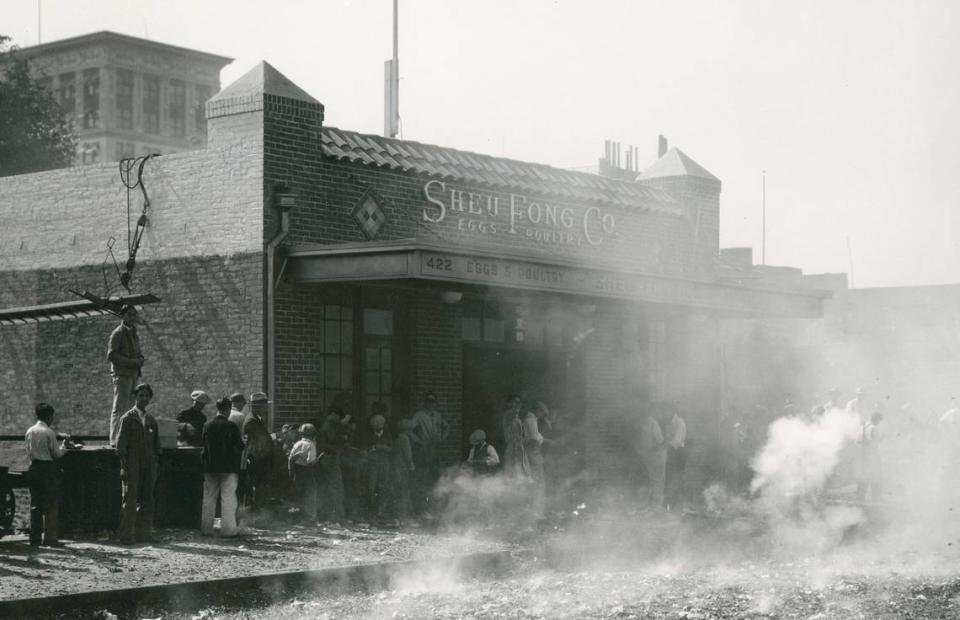
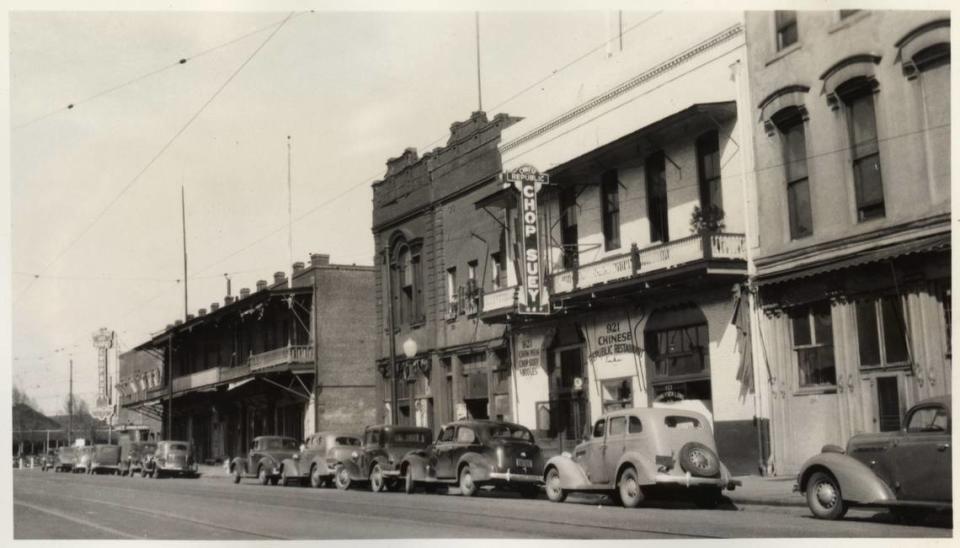
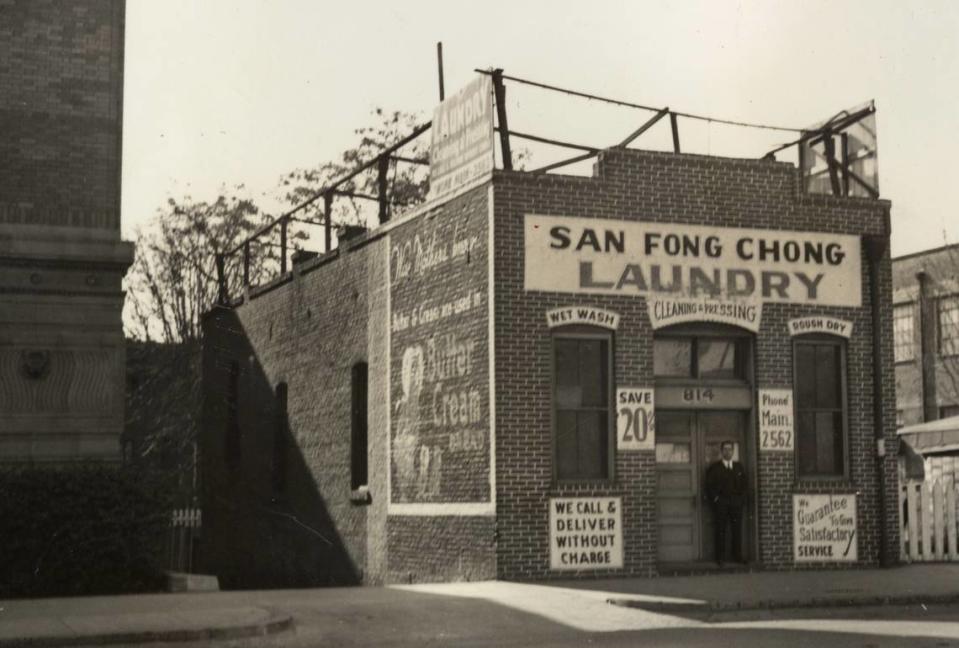
Here in Sacramento’s original Chinatown, young men found comfort in their new home city.
Unlike San Francisco’s Chinatown, which was at the center of segregation and anti-Chinese sentiment, according to the museum, Sacramento enabled assimilation.
“Its boundaries were more open and fluid,” the museum wrote on its website. It allowed people to move around the area for leisure, business and work.
The community did face racism. Mysterious fires destroyed buildings in Sacramento’s Chinatown in the 1850s. Similar communities across the country, according to the Yee Fow Museum in Sacramento, faced “The Driving Out,” a movement to push out people of Chinese descent.
Throughout California, Chinese miners were taxed heavily for being non-white non-U.S. citizens and railroad workers were paid lower wages than their white counterparts, according to the Library of Congress and National Park Service. In 1854, following a Supreme Court decision, Chinese people were not allowed to testify in court. In 1882, the Chinese Exclusion Act was passed, restricting Chinese laborers from immigrating.
The act was not repealed until 1943.
A growing community center
By the 1920s, the community slowly grew outside of its downtown core.
More Chinese women immigrated to the U.S. and a new generation of Chinese Americans was born, according to the book “Images of America: Sacramento’s Chinatown.” Chinese-run grocery stores, including Bel Air and Giant Foods, expanded into supermarkets.
“The success of the Chinese American grocers and the start of new families led to a change in the residential and vocational patterns of the community,” according to the book. “Old Chinatown remained, but its importance as the community center diminished.”
Families, however, were still drawn to Chinatown.
“I used to frequent the old Chinatown when I was a youngster,” said Norman Fong, a retired pharmacist and community advocate.
Fong, now in his 70s, was born and raised by Chinese immigrant parents. He said his parents would bring him to festivities in the area, such as family organizations’ association dinners, created to help Chinese immigrants.
Fong held his wedding banquet at the Confucius Temple on 4th and I streets.
The temple, built in 1959, is a center for the Chinese Consolidated Benevolent Association — a group of 11 Chinese family associations. Members came here to celebrate holidays and cultural events, such as the Lunar New Year.
“We had a thriving Chinatown,” said David SooHoo, a chef who has worked in several Sacramento restaurants, including the former Ming Tree and Chinois East-West.
SooHoo was born in San Francisco and moved to Sacramento in the mid-1960s. During that time, you would find everything in Chinatown, he said, from laundries and restaurants to produce distributors.
“It was an amazingly lively, fun place,” he said.
A ‘ghost town’
Since its establishment in the late 1800s, the boundaries of Chinatown have moved, Fong said, due to redevelopment, discrimination, urbanization and the construction of Interstate 5.
From where it stood on the railyards on I Street from Second to Sixth, it moved a few blocks over to Second and Fourth between I and K streets. Now known as Chinatown Mall, it’s at J and I streets and Third and Fifth streets.
“Through redevelopment, our Chinatown was decimated,” SooHoo said.
Chinatown wasn’t the only casualty of the city’s urban overhaul.
From 1900 to 1940, a Japantown was cradled by L, O, Third and Fifth streets. Japanese markets, banks, medical and law offices, and churches filled the area until they were bulldozed in the 1950s to construct Capitol Mall and skyscrapers.
Following these projects in the 1950s and 1960s that wiped out Sacramento’s west end, including parts of Chinatown, the Sacramento Redevelopment Agency had its eyes set on establishing the new Chinatown Mall.
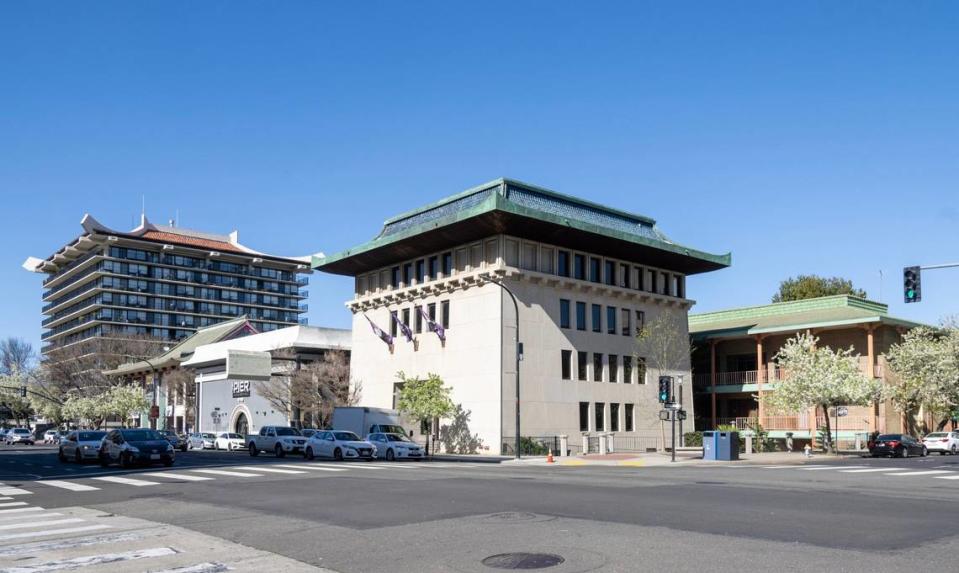
“Sacramento’s Chinatown will be one of a kind,” Robert E. Roche, the deputy director of the redevelopment agency and Chinatown Mall project coordinator, told The Bee in 1970. The project to redefine Chinatown was a multi-million dollar endeavor.
“There are some other restoration projects in the country, but I know of none that approaches ours in design, variety of uses and participation of the Chinese community.”
More than 50 years later, this stretch is now home to fewer than 10 buildings — aside from the block on Third and J, where the Vagabond Inn and Imperial Tower Apartments sit. The mall houses the Ping-Yuen Apartments, the Sun-Yat Sen Memorial, the Confucius Temple and three family associations.
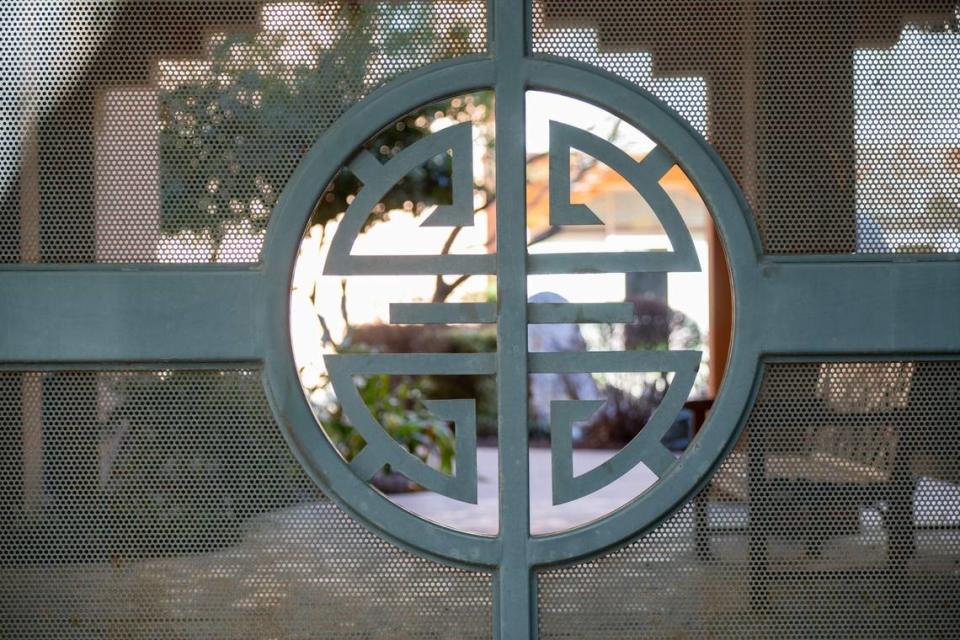
The buildings in Chinatown are dark and empty. Few people can be found wandering the area, most of whom either work or live in the nearby apartments, which are set aside for seniors and low-income renters.
Family associations buildings that once held meetings and events for the community have their doors chained shut. They’re quiet inside.
The Confucius Temple is idle.
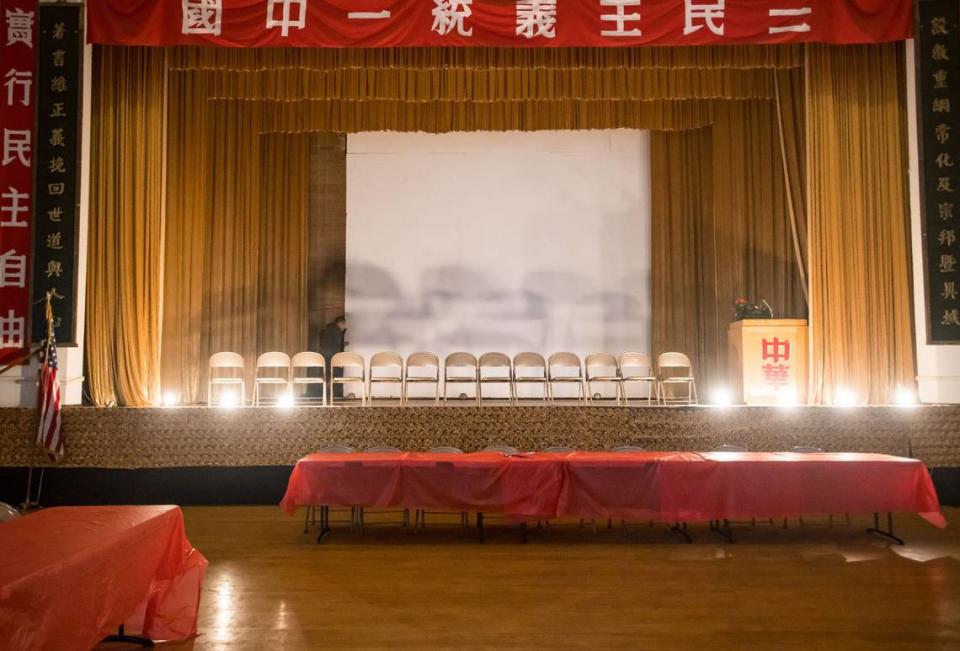
The temple’s auditorium, which was built for about 500 guests, and the children’s school that offered lessons in Mandarin, are deserted, having closed due to the coronavirus pandemic. Behind the rusted white gates and up the brick stairs, a glass window is broken, giving passersby a clear view of the black-and-white portraits of past association presidents and building donors.
“If you want to eat food, there’s nothing there,” SooHoo said, “... (you) can’t even shop for a kite.”
You won’t find restaurants in the Chinatown Mall, serving steaming dishes of noodles, fresh seafood, steamed rice and cold beers. The last eatery in the square, Thai Lotus, a Thai-cuisine spot, closed in 2022. The building still stands but inside is an unlit room where stacked chairs and decorations sit untouched.
“There is really not much foot traffic, there’s no commerce, there is no activities,” Fong said. “In essence, it is sort of like a ghost town.”
Pieces of the old Chinatown in Sacramento exist beyond the mall. Frank Fat’s stands on L Street, retaining its Michelin Bib Gourmand status since 2019. You can find the iconic Bel Air Markets — now owned by Raley’s — across the region.
While Chinatown was all but swept out, the community remained in Sacramento, growing and flourishing outside of downtown.
What’s next for the Chinatown Mall?
Several eyes are set on revitalizing Chinatown.
Currently, the city is assessing landscape and lighting needs in the area to increase visibility, according to city spokeswoman Jennifer Singer.
“The lighting in this area is deficient and outdated, while the existing tree canopy limits visibility and makes the area appear darker,” she said.
She said this makes accessing the area harder for residents in the nearby apartment complexes and contributes to vandalism and security concerns.
The study, funded by $50,000 in federal grant money, is expected to finish by the end of 2023. More funding will be needed to implement changes.
But others have ideas for bringing life back to Sacramento’s Chinatown.
Fong was the former president of the Chinese Community Service Center and involved in other community groups, such as the Chinese American Council of Sacramento. He has been working with colleagues, including SooHoo, to plan for Chinatown’s revival.
“I would like to see some sort of a movement to help protect this Chinatown footprint,” said Fong. “... We need to preserve the history, the culture.”
His ideas include increasing foot traffic and creating more housing in the area, revamping the Confucius Temple, establishing restaurants and retail shops and creating a performing arts arena.
“There’s a lot of possibilities here. I think there’s a lot of growth potential,” he said. “And, again, the vision to start with is to be able to honor the Chinese, the Asian American Pacific Islander community, and be able to preserve the culture and the heritage.”
Fong added that the city will eventually want to enliven this part of the downtown area because it’s in the middle of new growth and if the community doesn’t take initiative to do something, somebody else may come in.
He said he wants to make sure that the Chinese community takes leadership and advocate roles in this to guide the appropriate direction for Chinatown’s future.
But plans aren’t set in stone.
Fong said the biggest challenge, aside from funding and planning, is to get all the building owners in the Chinatown Mall to collaborate and agree on a goal for the area.
Within the square, improving Chinatown has begun, starting with the Confucius Temple.
Susie Wong, a government affairs consultant, currently volunteers with the Chinese Consolidated Benevolent Association and is helping to rehabilitate the Confucius Temple for cultural, historical and community use.
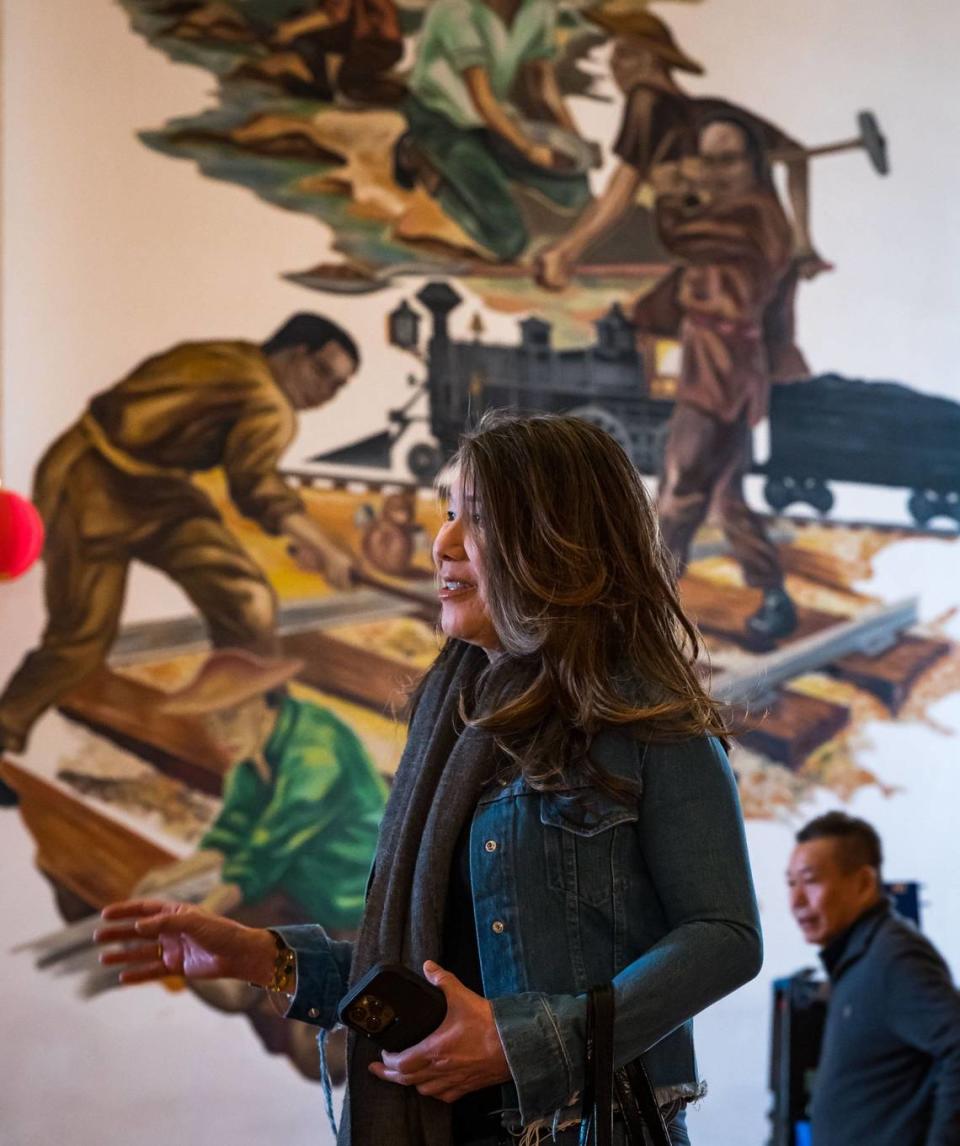
She said the association is in the application process for the Sacramento Municipal Utility District’s Shine Awards, a grant that promotes energy efficiency and neighborhood revitalization, to upgrade the center.
Wong added that the CCBA is discussing with the Downtown Partnership about enhancing the Chinatown area as well as working to designate the temple as a historic landmark.
Scott Ford, economic development director for the Downtown Partnership, said that, so far, the group has only talked to stakeholders and community partners about opportunities for the Chinatown Mall.
“Still preliminary at this stage,” Ford wrote in an email to The Bee, “but looking forward to continued engagement and recognize the tremendous value and opportunities for the area.”
‘For generations to come’
The temple is a piece of history for Chinese Americans.
“This is the last thing they have,” said Jong Chen, president of the benevolent association. “No matter what happens we got to make this one last for generations to come.”
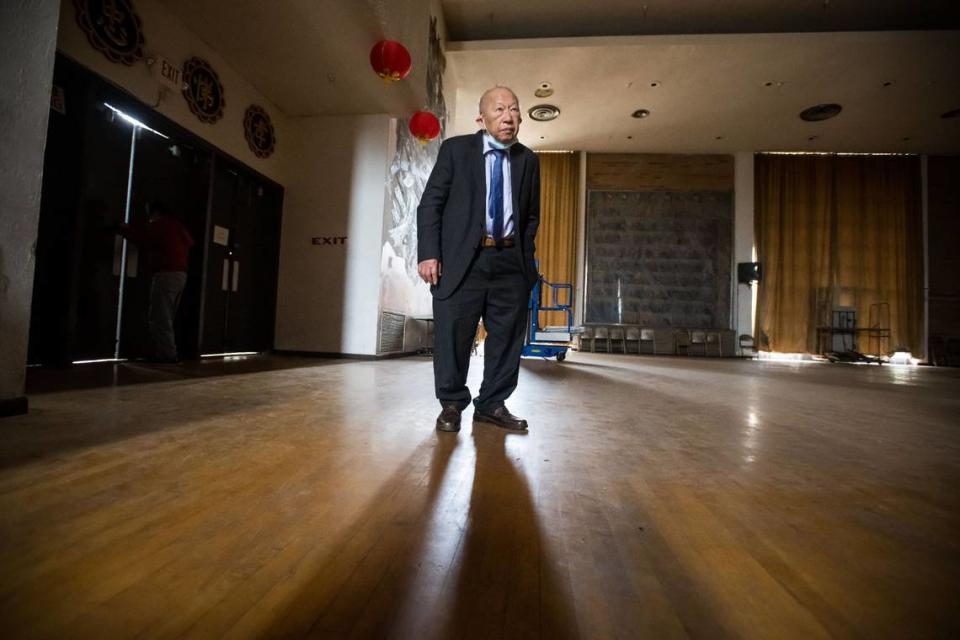
The temple doors haven’t been open since early 2020 due to the pandemic, but association leaders emphasize a need to conserve the building for its culture.
“This is the centerpiece of the Chinese community,” said Alfred Yee, former Yee Association president and retired Sacramento State professor. But with safety and sanitary issues, due to break-ins, and inaccessible parking, Yee said the temple won’t be open anytime soon, like in its pre-COVID days.
Ideas about revitalization have been thrown around over the past 15 years, said Marvin Ong, president of the Ong Ko Met Association. The last time the building owners met to discuss renovating the area was in 2019, said Wong, with CCBA, in regard to ADA compliance throughout the entire square.
“We’re just at the beginning,” Wong said.
As a native of Sacramento, Fong said he just wants something good to come out of Chinatown.
“Nothing ventured, nothing gained,” he said, adding that if nothing happens with his plans, at least it’ll open the door for discussion.
Have a question about the Sacramento region that you want to ask Bee Curious? Share with us in the form below or email us at beecurious@sacbee.com.

